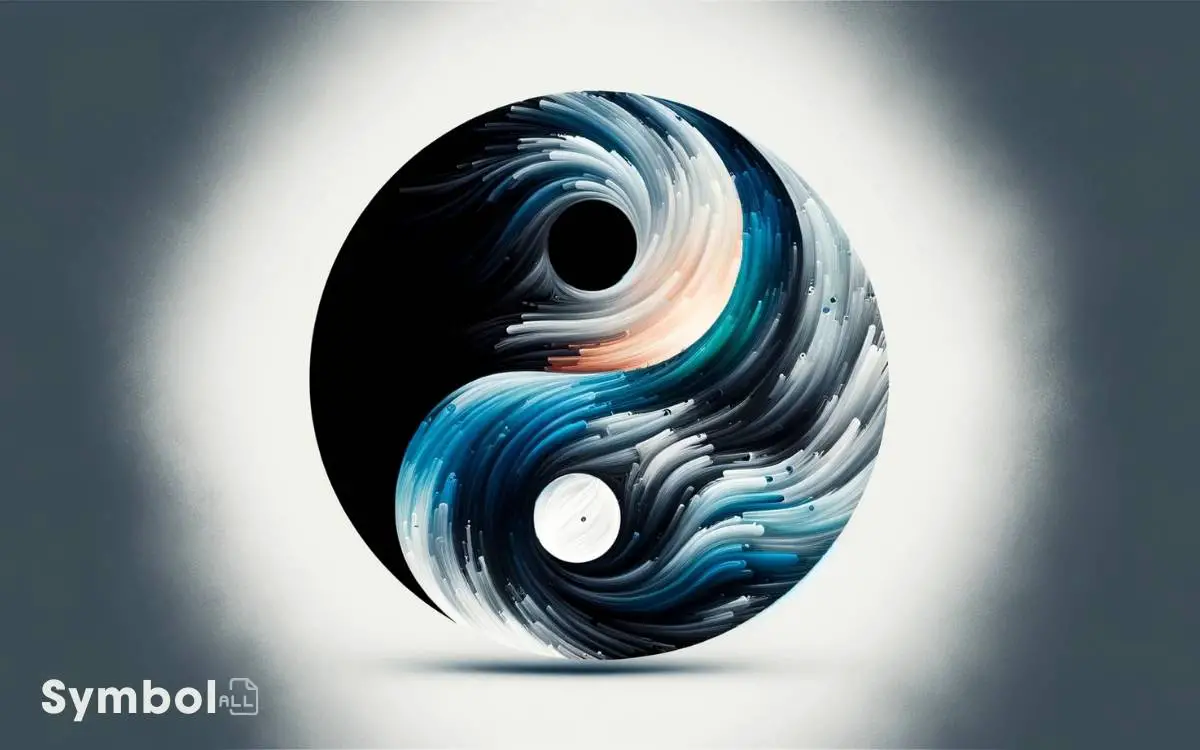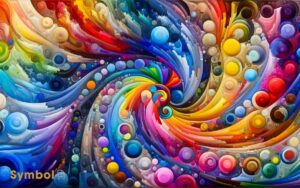What Color Is Yin in the Yin Yang Symbol? Black!
In the yin yang symbol, you’ll find yin represented by black. This choice isn’t arbitrary. Black embodies qualities like depth, introspection, and the ability to nurture and transform.
It aligns with yin’s association with darkness, passivity, and femininity, contrasting yet complementing yang’s light and activity. This symbol, deeply rooted in Chinese philosophy, serves to remind you of the balance between different forces.
The interplay of black and white illustrates not just a balance of colors but a profound philosophical insight into balance, harmony, and the cyclical nature of the universe.
Uncovering the layers behind this choice reveals much about cultural, philosophical, and modern interpretations.

Key Takeaways
Understanding Yin and Yang
To grasp the concept of Yin and Yang, it’s imperative to delve into their origins and the profound roles they play in Chinese philosophy, symbolizing dual forces that are interconnected and interdependent.
These concepts aren’t merely opposites; they complement and balance each other, forming a dynamic system where the harmony of the universe is maintained.
Yin is often associated with qualities such as darkness, passivity, and femininity, while Yang represents light, activity, and masculinity.
However, it’s crucial to acknowledge that these associations aren’t rigid. Each aspect contains the seed of its opposite, suggesting a fluid and ever-changing relationship.
This understanding invites you to appreciate the complexity and depth of Yin and Yang, highlighting their significance beyond simple dichotomies.
The Significance of Black
While exploring the yin-yang symbol, it’s fundamental to understand that black, representing yin, embodies qualities such as receptivity, depth, and the potential for renewal.
This color choice isn’t arbitrary but deeply symbolic, offering insights into the nature of existence from a philosophical perspective. The deliberate selection of colors often reflects cultural, emotional, and philosophical layers of meaning that resonate universally or within specific contexts. For instance, while yellow may symbolize energy, warmth, or enlightenment, understanding what burgundy color represents can evoke entirely different connotations, such as richness, ambition, and passion. These symbolic associations help communicate complex ideas nonverbally, influencing perception and emotional response.
- Receptivity: Black symbolizes openness and the ability to absorb and transform energies from the surroundings. It signifies a passive, yielding nature that complements the active qualities of yang.
- Depth: Just as the night sky holds mysteries, black represents the unseen, the unknown, and the depths of the human psyche, encouraging introspection.
- Renewal: It symbolizes the womb, the void from which life springs and to which it returns, highlighting life’s cyclical nature and the constant potential for rebirth and transformation.
Cultural Interpretations
Across various cultures, the yin component of the yin-yang symbol is interpreted through diverse lenses, each adding unique dimensions to its understanding.
In Chinese philosophy, yin traditionally represented by black embodies femininity, earth, darkness, and receptivity. This interpretation underscores a cosmological balance, where yin complements yang’s light, masculinity, and assertiveness.
Beyond China, the symbolism of yin varies, reflecting local values and worldviews. For instance, in some Eastern philosophies, yin’s association with water and the moon introduces notions of adaptability and renewal, emphasizing the cyclic nature of existence.
Such cultural readings enrich the symbol’s global relevance, allowing it to resonate deeply across different societies. They highlight the universal quest for balance, underscoring the interconnectedness of opposing forces in the natural world.
Symbolism in Modern Contexts
In modern contexts, the symbolism of the yin in the yin-yang symbol has evolved, reflecting contemporary societal values and challenges. You’ll find that this evolution embodies more than just historical or philosophical notions; it’s a mirror to our world’s shifting dynamics.
Here’s how:
- Embracing Duality: Yin’s cooler, receptive qualities remind you of the importance of empathy and understanding in an era marked by polarization.
- Sustainability and Balance: It symbolizes the need for environmental equilibrium, urging societies to adopt sustainable practices.
- Inner Peace: In a fast-paced, digital world, yin encourages a return to tranquility and introspection, essential for mental health and wellbeing.
These interpretations serve as a bridge, connecting ancient wisdom with the urgencies of contemporary life.
Beyond Color: Yins Essence
Delving deeper, beyond its mere color, the essence of yin within the yin-yang symbol encapsulates a profound philosophical significance that resonates across time and cultures.
You must grasp that yin isn’t just a static or singular notion; rather, it’s an embodiment of femininity, darkness, receptivity, and the moon’s serene energy.
This contrast to yang’s brightness and vigor isn’t opposition but complementary, fostering a holistic balance that’s pivotal in Taoist philosophy.
Understanding yin’s essence offers insights into the natural cycles, human behavior, and the universe’s interconnectedness. It’s a reminder that strength lies not solely in the overt and vigorous but equally in the subtle and nurturing.
In appreciating yin’s depth, you uncover a richer tapestry of meaning within the yin-yang symbol, transcending its visual representation.
Conclusion
In the dance of duality, Yin cloaks itself in the deep, absorbing black – a hue that swallows light yet births profound insights.
This color, dense with mysteries, isn’t merely a shade but a canvas where the universe sketches its secrets.
Through its darkness, it whispers tales of creation, transformation, and the intricate balance that sustains existence.
In embracing its essence, you’re not just observing a color; you’re delving into the profound depths of being, where light and shadow converge to reveal life’s intricate tapestry.






